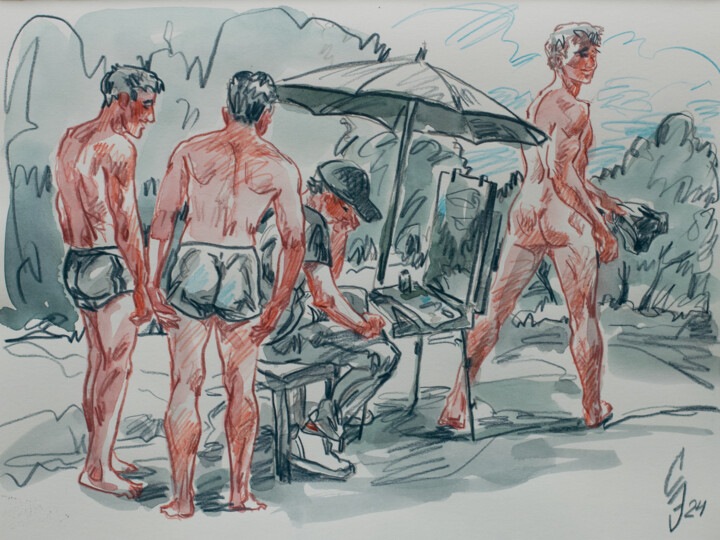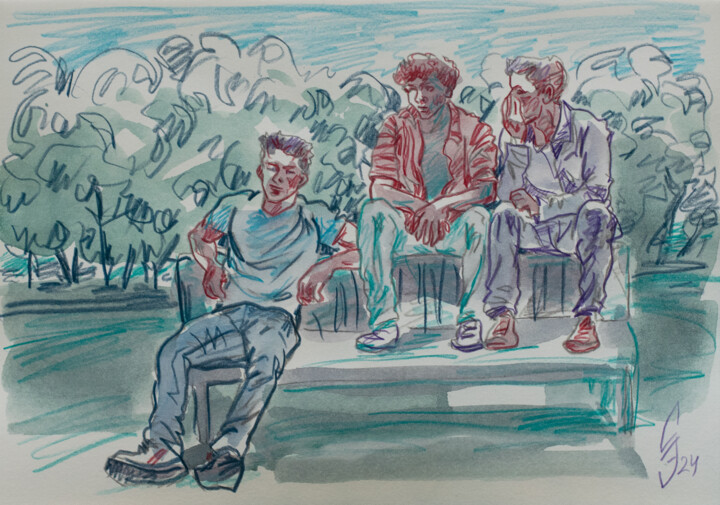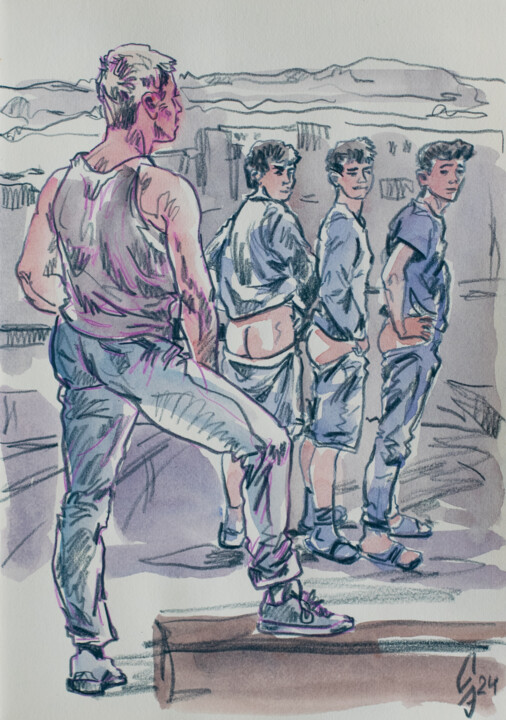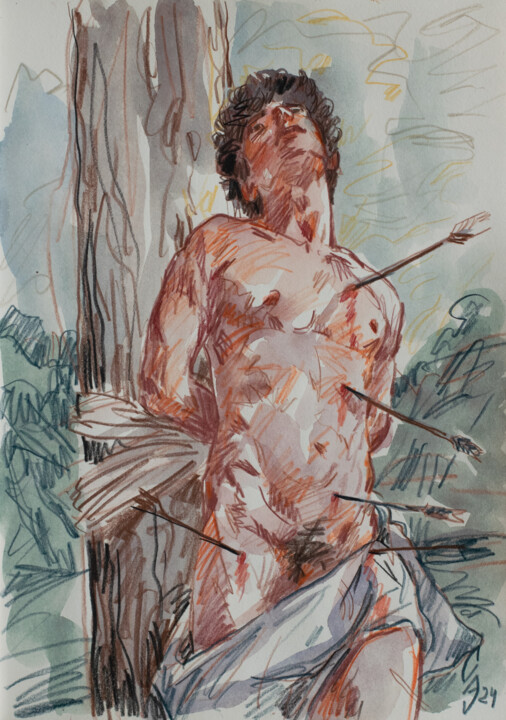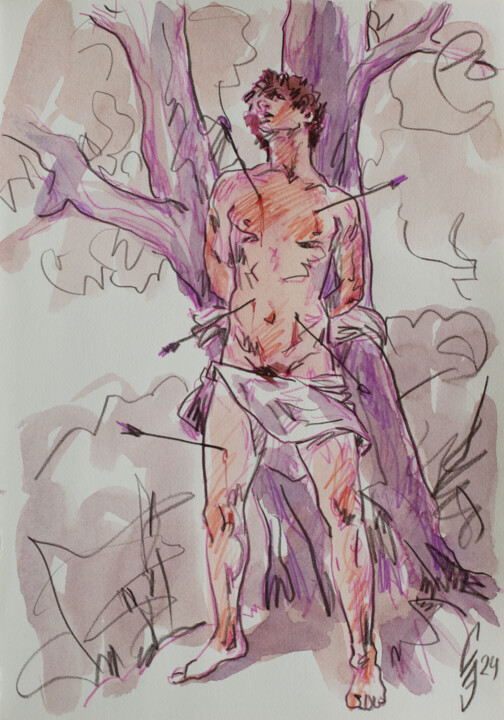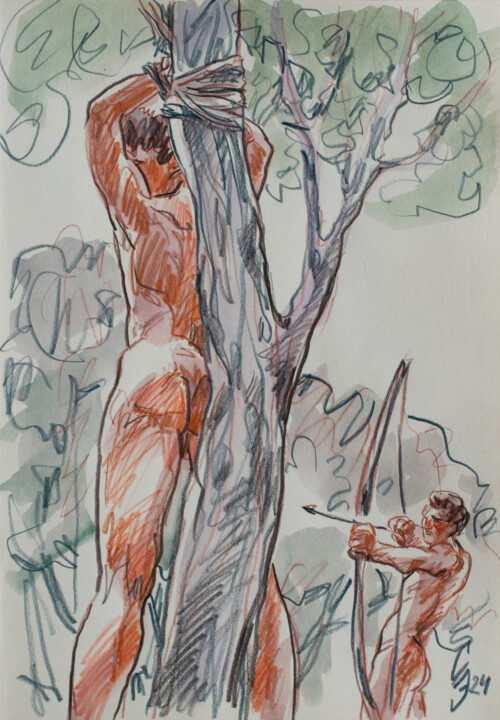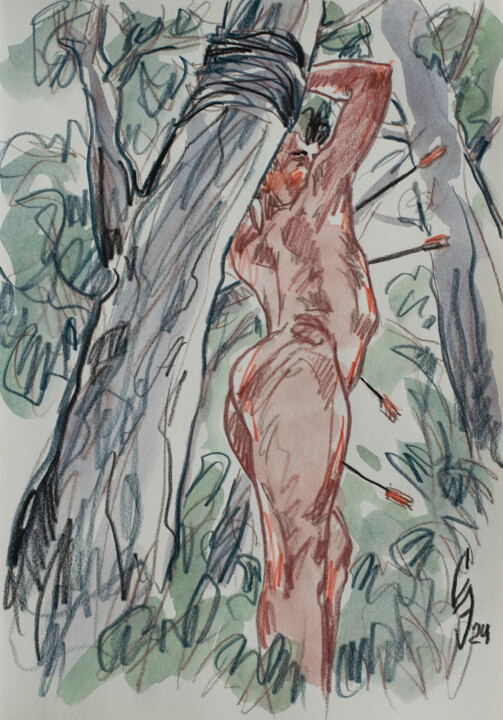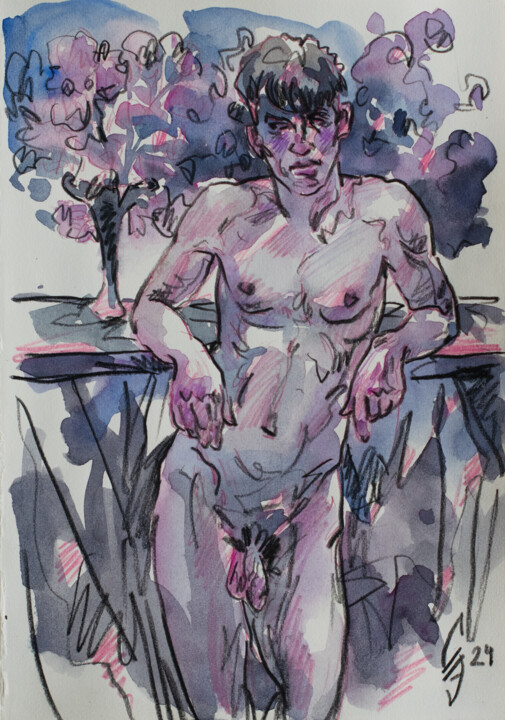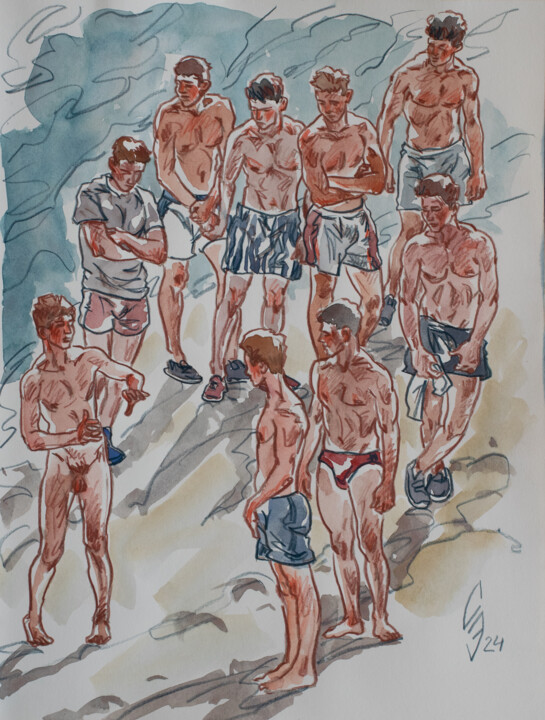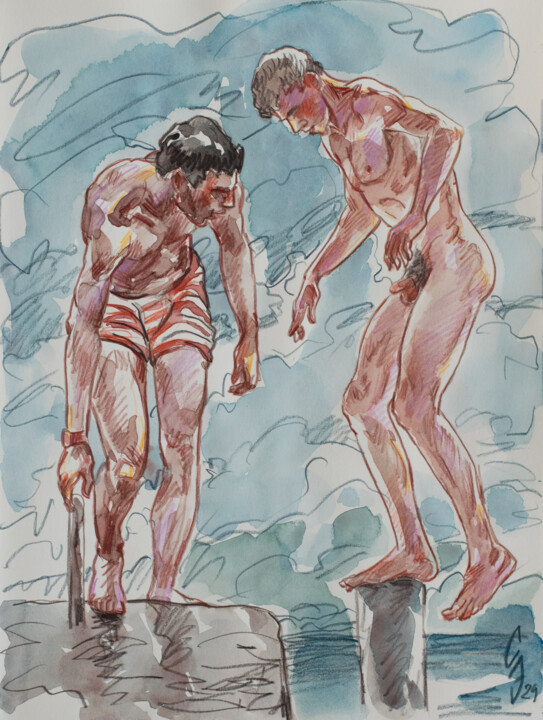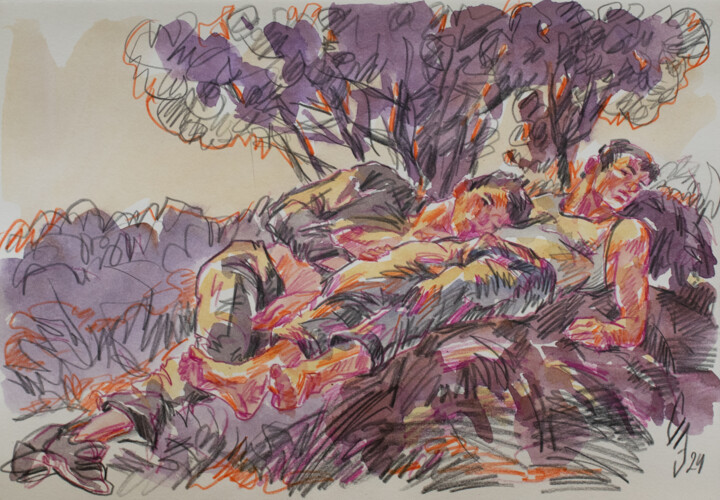What inspired you to create art and become an artist? (Events, feelings, experiences...)
I was interested in art from an early age. My mother kept postcards from friends and relatives, flowers, art reproductions and cute illustrations. I loved to look at them and try to draw something like that. Then there was the first museum visit. Then the first art album I got for my birthday. But the biggest impression on me was an artist who was painting on the street, his sketch was almost finished, he was sitting on a small chair and looking into the distance. I then thought that I wanted the same thing.
What is your creative career like, what techniques and subjects have you experimented with?
My career began in 1995 when I participated in a group exhibition in the city. I was still a student at the Pedagogical Institute. I really enjoyed feeling the community of art makers and the enthusiastic response of the audience. I was offered to work at my home fine arts department, and I began to combine the careers of an artist and a teacher. In 2014, after 17 years, I was laid off and became a freelance artist. Of course, I still had students, but from that moment on I focused only on my own creativity. An important moment in my career was joining the Union of Artists in 2006, and since 2009 I have been actively working with the Cultural Heritage Foundation. The Foundation bought 76 paintings from me, organized two solo exhibitions and published two catalogs. During this time I also began to collaborate with galleries in Holland and Germany. After moving to Austria, my husband and I organized our own studio and worked on joint projects. Oil painting has always been my favorite technique, with each painting I try to improve it to find new means of expression. However, in recent years I have experimented a lot with other techniques, these are ceramics, printmaking, oil pastels, collage, acrylic painting.
What 3 things distinguish you from other artists and make your work unique?
In each painting I try to convey a special atmosphere. Let the viewer immerse into the picture with the help of color and composition. Technically, my paintings are characterized by a recognizable style of creation, I create with a palette knife and outline almost every stroke of color with a thin line. This gives the surface of the painting a special texture, a decorative interpretation of the form, which got the technical term 'Di Vetro' from an Italian artist.
Where does your inspiration come from?
Inspiration comes from everywhere. From what I see around me, from memories of the past, from fantasies and dreams.
What is your artistic approach? What visions, sensations or feelings do you want to evoke in the viewer?
The point of reference is almost always the color, the combination of colors, the sound of different colors. And from the viewer I expect the first reaction to the color. Feelings are different and in their diversity lies the beauty. Joy, pain, excitement, serenity, sadness can all be found in my paintings.
What is the process of creating your work? Spontaneous or with long preparation (technique, inspiration from classical works of art, etc.)?
The process develops in different ways, usually after a sketch and careful consideration. But when I imagine the color scheme and see the composition, I paint very quickly. It's hard for me to concentrate on one work for a long time, so I often work on two or three canvases, on ceramics, or draw in a sketchbook at the same time.
Do you use a particular working technique? If so, can you explain it?
In many years of creativity, a certain technique has developed, but it is not a dogma and I often experiment in technical terms. I transfer the sketch to the canvas, then I make an imprimatur with oil with a brush, sometimes I paint the next layer on the wet imprimatur, sometimes on the dry, the effect is different. I spread the paint with a palette knife like a mosaic. After drying, I circle all or some paint strokes with a thin brush.
Are there innovative aspects to your work? Can you tell us what it is?
I wouldn't call myself an innovator, my work continues the traditions of European art, genre painting. Maybe only in technical terms I bring something new.
Do you have the most comfortable format or medium? If so why?
More like no than yes. I like to invent different compositional movements and need different canvas formats accordingly.
Where do you produce your work? At home, in a shared studio, or in your own studio? How do you organize your creative work in this space?
Recently, my husband and I rented a studio. That's such good fortune. But I used to work where I lived. Now I have to get used to going to the studio every day. I have several workspaces set up there. For painting, for sculpting, a table to work on unique prints, and I also dream of buying a printing press to print prints. There is also an exhibition space where I can invite colleagues, collectors and just art lovers to see an exhibition of my paintings.
Do you have to travel for work, meet new collectors, attend fairs or exhibitions? If so, what do you get out of it?
I'm not a very social person, I'm more absorbed, but I love visiting exhibitions, museums and galleries. I like to draw live models in the company of colleagues and go outdoors. It gives a boost of energy, inspiration and a sense of unity.
How do you see the future of your work and career as an artist?
I dream that our studio will become a meeting and communication place for colleagues and collaborators in art, I would like to participate in international art fairs and, of course, continue to be creative, improve skills, find new solutions.
What is the theme, style or technique of your latest artwork?
I am currently working on a painting commissioned by a collector. He really liked the oil pastel sketch and now I'm doing a large-scale painting based on that sketch. It will be an oil painting in my style. A small erotic, life-affirming and frontal composition about friendship and mutual help.
Tell us about your most important exhibition experience?
I think an important exhibition experience is yet to come. Previous experiences were also important in their moment, and each of them foreshadowed a new one.
If you could create a famous work in art history, which would it be? And why?
There are many amazing masterpieces of art history that I adore, but I would love to create my own.
If you could invite a famous artist (deceased or living) to dinner, who would it be? How would you suggest he spend the evening?
I read many biographies of famous and popular artists. But for dinner I would not dare to invite one of them. Now, if there was a possibility to visit the workshop of Michelangelo or Vrubel or Moiseenko during their lifetime, I would be very interested.

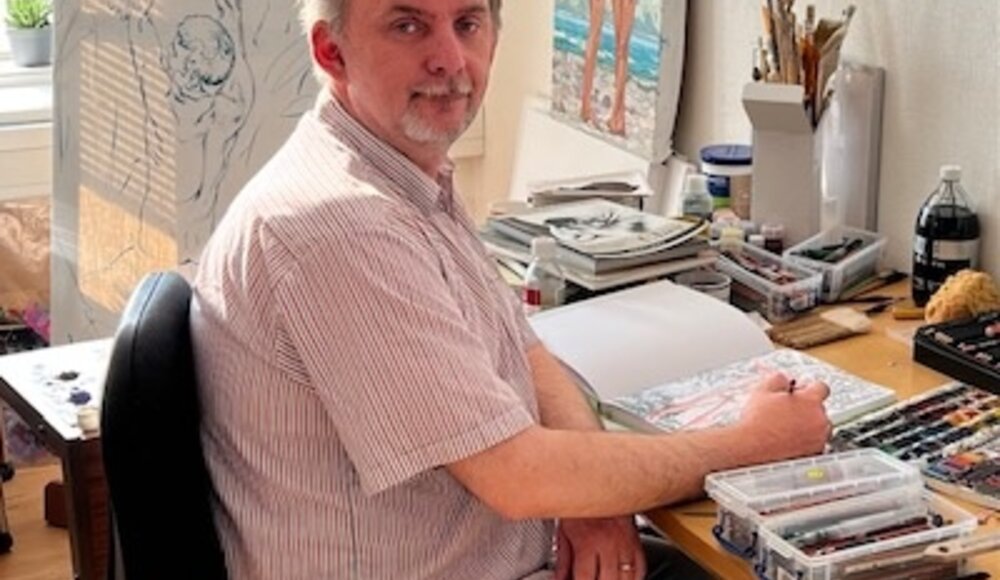





 Olimpia Gaia Martinelli
Olimpia Gaia Martinelli

